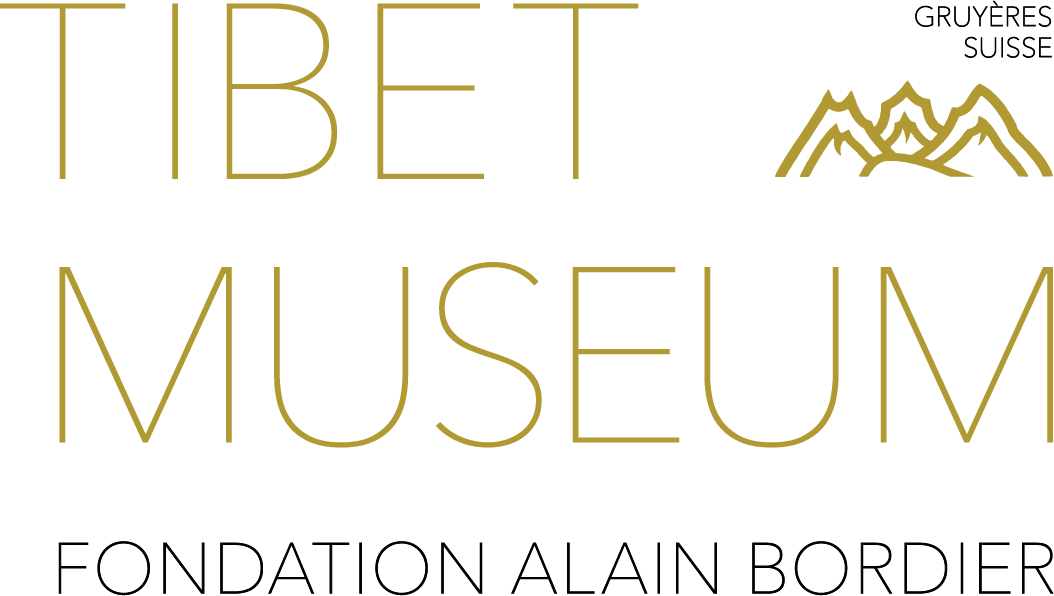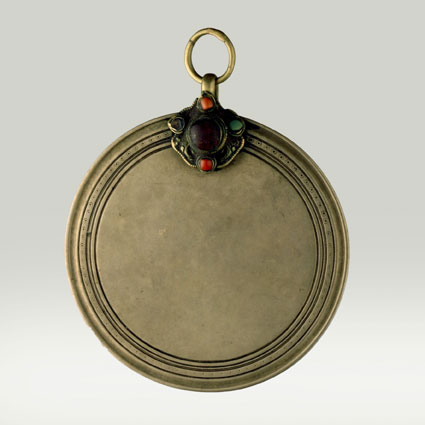Ritual mirror
Add to favorites
ABR 031
Code: ABR 031
Country: Tibet
Style:
Date: 1800 - 1900
Dimensions in cm WxHxD: 11.5 x 14.8
Materials: Brass
Melong
(From Wikipedia, the free encyclopedia)
Melong is a Tibetan term that holds the semantic field: "mirror", "looking glass". The melong is a polyvalent symbol, divine attribute, and quality of the enlightened mindstream or bodhicitta.
The mirror is an ancient symbol throughout Indian religions. In Indian iconography it may be understood as a symbol for clarity, wholesome or complete perception and “primordial purity” (Tibetan: ka dag) of the mindstream or consciousness. The mirror is often depicted as an accoutrement of the hagiographical signification of fully realised Mahasiddha, Dzogchenpa and Mahamudra sadhaka. The mirror may be understood as a quality of the mindstream that denotes perceiving experience as it is without obscuration forded by klesha, etc.
The mirror may be engaged in the advanced Tantric sadhana of the Gyulu.
(From Wikipedia, the free encyclopedia)
Melong is a Tibetan term that holds the semantic field: "mirror", "looking glass". The melong is a polyvalent symbol, divine attribute, and quality of the enlightened mindstream or bodhicitta.
The mirror is an ancient symbol throughout Indian religions. In Indian iconography it may be understood as a symbol for clarity, wholesome or complete perception and “primordial purity” (Tibetan: ka dag) of the mindstream or consciousness. The mirror is often depicted as an accoutrement of the hagiographical signification of fully realised Mahasiddha, Dzogchenpa and Mahamudra sadhaka. The mirror may be understood as a quality of the mindstream that denotes perceiving experience as it is without obscuration forded by klesha, etc.
The mirror may be engaged in the advanced Tantric sadhana of the Gyulu.
This book is available at the museum's library Beer, Robert , 2003. Les symboles du bouddhisme Tibétain. Albin Michel. Pp. 46, 60-61, 325-326
Beer, Robert , 1999. The Encyclopedia of Tibetan Symbols and Motives. Boston: Shambala. Plate 93 et 121
This book is available at the museum's library Essen, Gerd-Wolfgang and Thingo, Tsering Tashi, 1990. Die Götter des Himalaya - Buddhistische Kunst Tibets. München: Prestel-Verlag.


